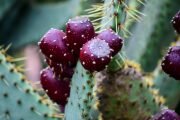Dangers Of Genetically Engineered Salmon
I wonder how this latest ‘invention’ or should I say ‘creation’ will sit with consumers? Brace yourself for the first genetically engineered farm animal – genetically engineered salmon… straight from the lab, to the fish farm, to your dinner plate!
Genetically Engineered Salmon: Something’s fishy
It was a quiet Friday afternoon – the perfect time to slip in a bit of news that wasn’t supposed to attract any media attention.
In fact, it was so important to not widely publicise this event, that the American Food and Drug Administration (FDA) released their environmental assessment of a genetically engineered salmon on the Friday before Christmas, last year.
Clever isn’t it? Just when everyone had focused their attention on wrapping presents and welcoming friends and family from afar into their homes, the medical authorities slipped in a press release about a Frankenfish, created by the company AquaBounty, which will soon be ‘grown’ in fish farms.
Talk about pulling a fast one!
The FDA said in their announcement that the approval of the genetically engineered (GE) salmon, called AquAdvantage, will not have a significant impact on the environment.
Of course it will! Here’s why.
AquAdvantage is designed to grow five times faster than normal salmon. That means this Frankenfish will get to supermarket shelves in half the time.
But what about the fish that don’t make it onto supermarket shelves? What happens if some of them find their way into the wild? What happens if they make whoopee?
Scientists have tweaked the genes of AquAdvantage salmon to make them sterile. But AquaBounty admits that some of the fish will produce fertile eggs.
Nobody knows what might happen when these Frankenfish reproduce with normal salmon. But if you ask me, this spells the potential for environmental chaos.
US researchers at Purdue University devised a computer model to anticipate the outcome if 60 GE salmon were released into a population of 60,000 normal salmon. Within just 40 fish generations, the normal fish population was gone. Completely extinct.
Canadian researchers took this experiment a step further. They created genetically engineered salmon, which was fast-growing. When they released the fish in a tank with normal salmon, nothing much happened. But when researchers decreased food supply, the GE fish went wild. They began cannibalizing other fish – both GE and normal.
The population crashed. Again – complete extinction.
An environmental disaster like this could be devastating to salmon populations that are already endangered. That would be a catastrophic loss of one of our most valuable sources of protein and omega-3 fatty acids.
Recovering from such devastation would be impossible. As one Fish and Wildlife Service official noted, once fish escape, there is no closing that door. He called this plan a “bad precedent to set.”
I would call that a glaring understatement.
Genetically modified foods are strictly controlled in the UK and the European Union and the FDA hasn’t chiselled their action in stone. Not yet. So this danger may not seem to be immediate. I do hope that somehow this madness can be stopped…
Did you find this information useful?
Then why not get more expert health recommendations just like this delivered direct to your inbox?
"It is truly refreshing to read a newsletter on the topic of alternative medicine which is scientifically based and reviewed by professionals..." - Robert Sinott
We respect your privacy and will never share your details with anyone else.Disclaimer: Bear in mind the material contained in this article is provided for information purposes only. We are not addressing anyone’s personal situation. Please consult with your own physician before acting on any recommendations contained herein.
Sources:
“Frankenfish Could be Close to Approval!” Alliance for Natural Health, 1/8/13, anh-usa.org
“Act Now to Stop Genetically Engineered Fish from Receiving Approval” Dr. Joseph Mercola, 1/8/13, mercola.com
“Troubling Emails Reveal Federal Scientists Fear FDA Approval of Genetically Engineered Salmon” Food and Water Watch, 11/15/10, foodanwaterwatch.org










